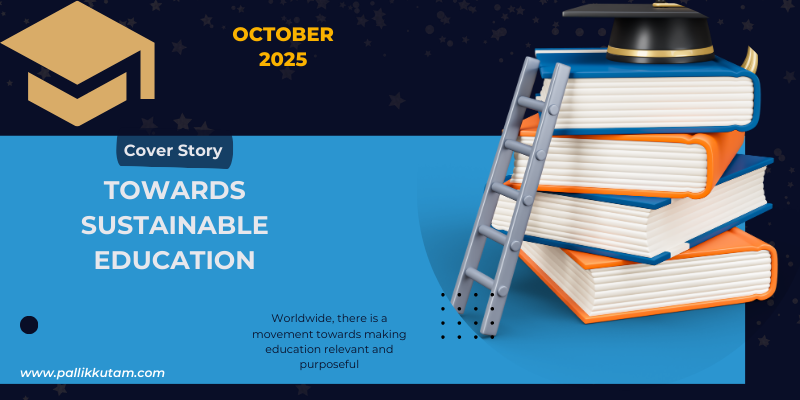
This article is available for free. Please log in or subscribe to access all articles.
"A Saudi Arabian group is establishing schools in rural
India. They were building some schools in Bihar, Kolkata, and other
places. They were planning to invest Rs
3 crore to start a school. I suggested it would be better if they built a
digital infrastructure. With this, they can bring expertise from outside rather
than training local people," according to PK Shihabudeen, entrepreneur and
co-founder of Hash Future School.
With technology making inroads into education, it is time
for policymakers, institution builders, and all stakeholders to devise
strategies to make education sustainable.
Whether it is in the USA, Canada, Europe, or Asia, the key
concern now is making education relevant and meaningful for learners. In
America, graduates account for 30% of the unemployed and have increased by 10%
in the past fifteen years.
In many universities, professors find it difficult when
students submit AI content for assignments. Professors are now rethinking not
just assignments, but also bringing a transformation in pedagogy. Harvard
University instructors now face a delicate balancing act: integrate AI in ways
that enhance learning, while safeguarding academic integrity and critical
thinking
The positives in favour of AI are that it offers a
transformative shift for education, requiring a digital focus over old systems.
This enables personalisation, reduces study time, and fosters co-creation for
AI natives.
Death of Human Capital?
Five years ago, Phillip Brown, Hugh Lauder, and Sin Yi Cheung stated in their book, The Death of Human Capital, that education was not helping learners earn a livelihood. "In encouraging people to invest in themselves, human capital policies have fueled credential inflation rather than extended individual opportunity. These inflationary pressures diminish the value of individual and public investments when there is a significant mismatch between the requirements to do a job and the requirements to get a job," the authors pointed out in the book.
According to them, credential inflation creates a mirage of opportunity in much the same way that financial inflation makes it seem as if people have more money. The authors have argued that the human capital story is one of a failed revolution. Therefore, an alternative approach to education, jobs, and income inequalities.
The positives in favour of AI are that it offers a transformative shift for education, requiring a digital focus over old systems. This enables personalisation, reduces study time, and fosters co-creation for AI-native users.
Gandhi’s New Education
Mahatma Gandhi viewed education be self-sustaining and free. He said children could work on the spinning wheels in schools to earn while they learn. “It is admitted that the so-called knowledge of the three ‘R’s that is at present given in Government schools is of little use to the boys and girls in afterlife.” His idea of having a spinning wheel was connected to the situation prevailing in the country during the pre-Independence days, as self-reliance had to be promoted and foreign goods banned. Gandhi believed that education should develop the head, heart, and hands. Spiritual training was also to be imparted to children.
He firmly believed that education not connected with the surroundings is not purposeful. Vocational training provided in schools could be self-supporting. They also learn to read, write, and do arithmetic. “Real education has to draw out the best from the boys and girls to be educated. This can never be done by packing ill-assorted and unwanted information into the heads of pupils. It becomes a deadweight crushing originality in them and turning them into mere automata."

Sreekumar Raghavan is an experienced media professional and trainer. He is presently Editor of Pallikkutam, The Education Observer and hosts the monthly event, Rajagiri Round Table Conference.
SUBMIT REVIEW
Please email us: editor.rajagirimedia@gmail.com